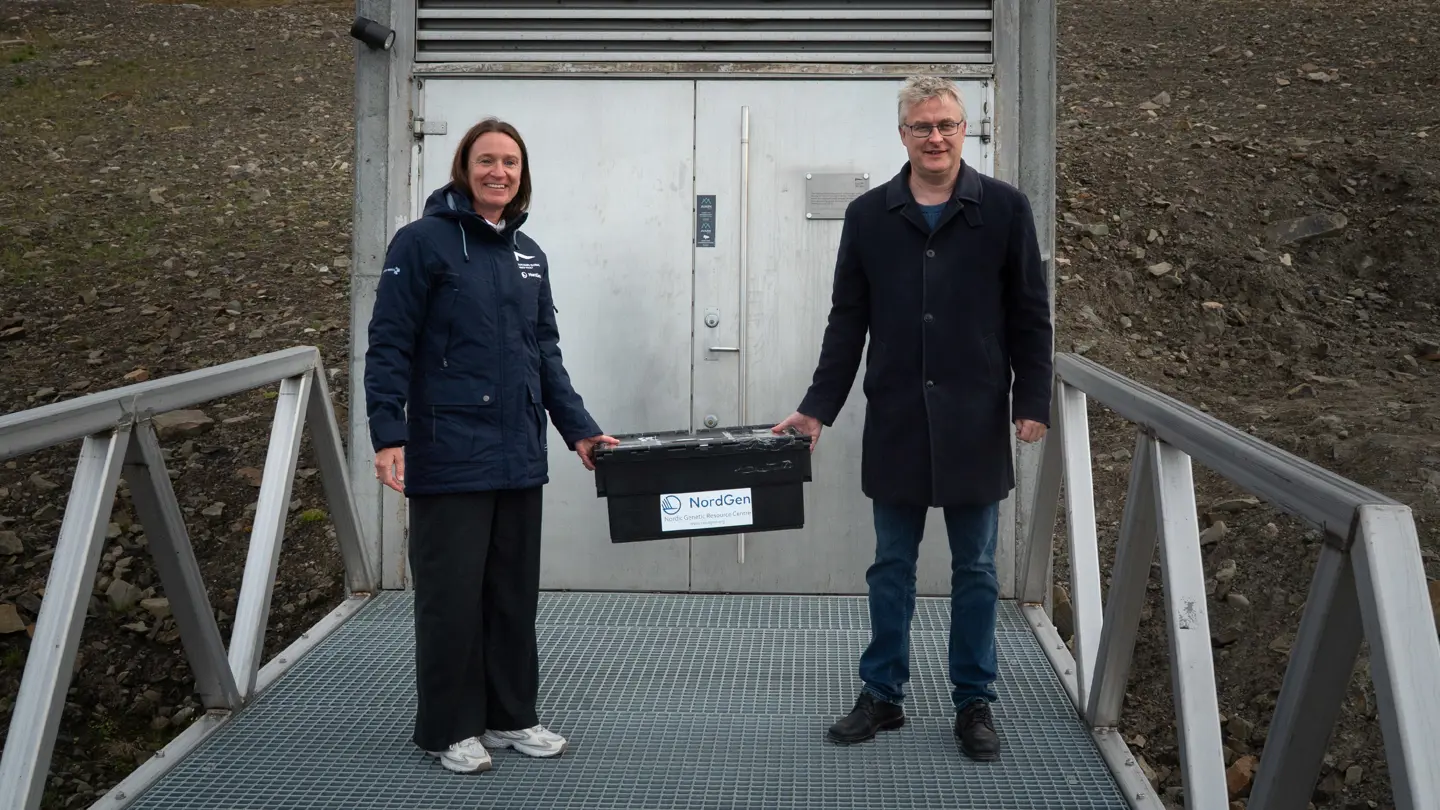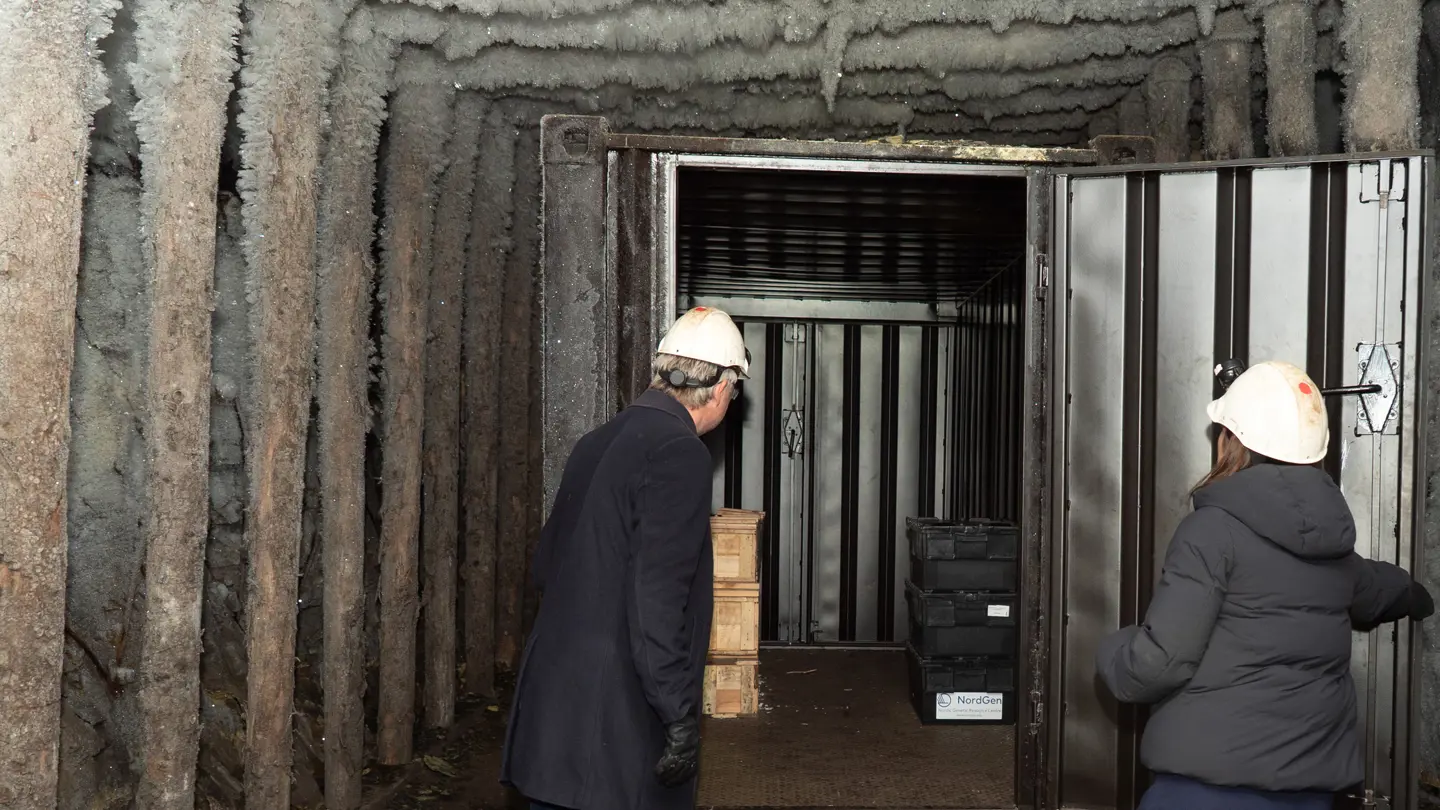
Important crops for the Nordic countries in focus when Danish minister visited Svalbard
During his trip to Svalbard, Denmark's Minister for Food, Agriculture, and Fisheries, Jacob Jensen, received information about Svalbard Global Seed Vault and the seed samples from NordGen that will be included in the next deposit.
On August 17–18, Danish minister Jacob Jensen traveled to Svalbard with a delegation. One of the purposes of the trip was to learn about the activities carried out at the Svalbard Global Seed Vault. Among other things, the minister got to familiarize himself with the contents of the seed shipment sent by NordGen to be included in the next deposit, which will take place in October.
The box contains 381 seed samples from the Nordic countries' joint seed collection, 19 of which are of Danish origin. The Danish seed samples includes wild carrot and lingonberry, as well as cultivated varieties of turnips, root parsley, and perennial ryegrass. In total, there are more than 4,600 seed samples from 241 different plant species of Danish origin stored in the Seed Vault.
”I greatly appreciate this collaboration. We live in turbulent times, so it is good to know that someone is safeguarding this part of our heritage. It is an honor for me to carry this box, which contains such important contents, not least for food security in the Nordic countries,” said minister Jacob Jensen.

During the visit to the Seed Vault, presentations were given by Grethe Helene Evjen, Senior Advisor at the Norwegian Ministry of Agriculture and Food, and by the Executive Director of NordGen, Lene Krøl Andersen. The latter pointed out to the guests that there are two ongoing 100-year experiments at Svalbard monitoring seed viability over time. The first was initiated by the Nordic Gene Bank (predecessor to the current plant section within NordGen) in 1986 in the now closed Coal Mine No. 3. The aim of this experiment is to monitor the seed longevity of 17 important Nordic agricultural crops in permafrost. The experiment also investigates how seed-borne diseases survive under these conditions. Another experiment is also underway at the Svalbard Global Seed Vault, but here it concerns 14 globally important crops sent from six genebanks around the world. This experiment does not include any studies of pathogens.
“All genebanks work with various forms of long-term conservation, but the knowledge about seed viability is limited. In both experiments in Svalbard, germination tests are conducted over a long and actual period of time. This is what makes the experiments unique and valuable,” says Lene Krøl Andersen.
Jacob Jensen's trip to Svalbard also ended with a visit to Mine 3, where he was allowed to enter the steel container where the seed samples from the Nordic 100-year experiment are stored.

Svalbard Global Seed Vault
The Svalbard Global Seed Vault is the world's largest security facility for the diversity of crops conserved in the world's genebanks.
The building is owned by Norway and operated by three partners; the Norwegian Ministry of Agriculture and Food, the international organization Crop Trust and NordGen.